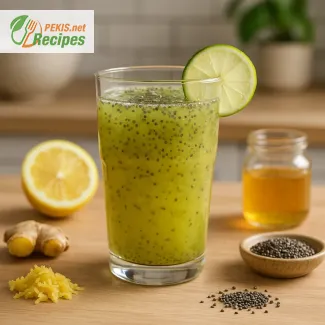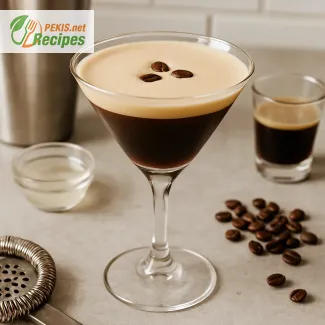
Mastering the Art of Crafting Gluten-Free Beer from Scratch
Discover the joy of brewing your own gluten-free beer with rich flavors and full control over ingredients
For beer lovers who are navigating gluten intolerance or celiac disease, enjoying a cold, frothy pint has often meant compromising on flavor or settling for limited commercial options. But the world of home brewing offers an exciting alternative—one where you can craft your very own gluten-free beer that’s just as bold, crisp, and refreshing as its traditional counterpart. By selecting naturally gluten-free grains and managing each step of the process yourself, you’re not only ensuring a safe brew, but also unlocking a universe of flavor potential.
Whether you're an experienced homebrewer or a complete beginner looking to explore the gluten-free lifestyle, this method of brewing opens up possibilities for customization, creativity, and above all, satisfaction. Unlike mass-produced gluten-free beers that often rely on enzyme-treated barley or stripped-down recipes, brewing at home lets you work with wholesome ingredients like sorghum, rice, millet, buckwheat, or corn—each contributing their own flavor profiles, body, and aroma to your final product.
Brewing gluten-free beer at home is not merely a substitute—it’s an entirely different experience. When you get to know the characteristics of each grain and how they behave during mashing, fermentation, and carbonation, you can start to shape the beer into something uniquely yours. You can create a light and citrusy summer ale, a toasty amber lager, or even a full-bodied stout—all without any trace of gluten.
Why brew your own gluten-free beer?
The market for gluten-free beer is growing, but choices can still be limited depending on where you live. Many of the commercial varieties are filtered versions of traditional beer, using enzymes to break down gluten proteins. For individuals with severe sensitivities, this can pose risks—and for those who value rich, unfiltered flavor, it often results in a flat or artificial taste.
Homebrewing solves both of these issues. It allows you to select only naturally gluten-free ingredients, ensuring safety and superior taste. You can use ingredients that are difficult to find in store-bought options—such as quinoa for a nutty base, or molasses for a deeper caramel note—and adapt the recipe to match your exact preferences. You’re in control of sweetness, bitterness, alcohol content, and mouthfeel.
Furthermore, brewing at home creates a sense of ritual and fulfillment that’s hard to replicate. From steeping the grains to monitoring the fermenter, every step brings you closer to the finished product. When you finally pour your own bottle of gluten-free beer, chilled and effervescent, the satisfaction is unparalleled.
Common challenges and how to overcome them
Brewing gluten-free beer does present a few unique challenges. Traditional recipes often rely on barley or wheat, which provide natural enzymes to break down starches into fermentable sugars. With gluten-free grains, you’ll need to introduce commercial enzymes during the mash or opt for syrups like sorghum that are already fermentable. Understanding this adjustment is key to achieving the right sugar content for your yeast to convert into alcohol.
Another challenge is texture. Some gluten-free grains lack the proteins needed to give beer a proper head or mouthfeel. This can be solved by incorporating ingredients like maltodextrin, which adds body without affecting gluten levels. Likewise, using a gluten-free yeast strain can enhance fermentation and flavor development without contamination.
Sterilization and equipment cleanliness are also crucial. Any residue from previous batches brewed with gluten-containing grains can lead to cross-contamination. Always use clean, dedicated tools and containers for gluten-free brewing to ensure your results are safe and pure.
Flavor, color, and style: endless possibilities
Contrary to the myth that gluten-free beer is bland or watery, the reality is that its diversity is only limited by your imagination. Millet brings a malty depth, while rice adds smoothness and balance. Teff and amaranth contribute earthy undertones, and buckwheat can mimic the toastiness of rye. For added complexity, natural adjuncts like honey, citrus peel, herbs, or fruit purees can be infused into the brew, creating signature combinations that are both bold and elegant.
Color can also range dramatically—from pale golden ales to rich chestnut browns and even jet-black porters. The absence of traditional malted barley does not mean the absence of color or character. It simply requires thoughtful selection and balance of ingredients. With time, experimentation, and the right method, you can craft beers that rival or even surpass traditional brews in taste and quality.
Ingredients matter: choosing your gluten-free base
At the heart of every exceptional gluten-free beer is a strong foundation of ingredients. Choosing the right grains and understanding how they behave is crucial for flavor development. Sorghum syrup is a popular base for beginners, offering a neutral backdrop with gentle sweetness and good fermentability. For those looking for more complexity, blending millet, corn, and rice malts can achieve a layered and balanced profile.
Adjuncts and specialty additions can elevate your beer to new heights. Roasted chestnuts can bring a smoky undertone, while caramelized sugars or maple syrup add warmth and depth. Hops selection is another crucial aspect—depending on whether you prefer floral, citrus, earthy, or piney notes, different hop varieties can radically transform your beer’s aroma and finish.
Yeast strains must be carefully selected and confirmed to be gluten-free. Many ale yeasts perform well in gluten-free environments, fermenting cleanly and supporting the beer’s natural flavor. Some brewers also experiment with wild fermentation for sour or farmhouse-style beers, adding a layer of rustic charm and acidity.
With the right ingredients, method, and mindset, brewing gluten-free beer at home becomes more than a culinary project—it becomes a rewarding, flavorful journey that respects your dietary needs without compromising on taste.
- Sanitize all equipment thoroughly, including fermenter, spoons, kettle, thermometer, and bottles. Cross-contamination with gluten must be completely avoided.
- Heat 3 liters (12.7 cups) of water in a large brew pot to 70°C (158°F). Add brown rice malt and maltodextrin. Stir continuously and hold the temperature for 30 minutes for enzymatic conversion.
- Remove grain solids and bring the liquid to a gentle boil. Add sorghum syrup and corn sugar. Stir well to dissolve.
- Once boiling, add hops and Irish moss (optional). Maintain boil for 60 minutes. Add yeast nutrient in the last 10 minutes.
- After the boil, cool the wort quickly to 20–22°C (68–72°F) using a cooling coil or an ice bath.
- Transfer the cooled wort to a sanitized fermenter. Top up with cold water to reach 2.6 liters total. Shake well to aerate.
- Pitch the yeast into the fermenter and seal with an airlock. Ferment at a steady 20–22°C (68–72°F) for 10–14 days or until fermentation is complete (check with hydrometer).
- After fermentation, dissolve the priming sugar in a small amount of boiled water, let cool, and mix it with the beer.
- Bottle the beer, cap tightly, and store at room temperature for 7–10 days to carbonate.
- Chill for at least 24 hours before serving. Enjoy your homemade gluten-free beer responsibly.
Tips for Perfecting Your Homemade Gluten-Free Beer Recipe
Small adjustments that elevate flavor, body, and consistency in gluten-free brewing
Crafting gluten-free beer at home is both a science and an art. While the base recipe offers a solid foundation for a flavorful brew, several thoughtful enhancements can significantly improve the outcome—both in terms of taste and texture. By carefully selecting ingredients, mastering brewing techniques, and avoiding common pitfalls, your homemade beer can reach new heights that rival even the best traditional ales and lagers.
Choosing better grains for deeper complexity
The most common foundation for gluten-free beer is sorghum syrup, praised for its fermentability and neutral flavor. However, sorghum can sometimes leave a slightly sour or metallic aftertaste. To counter this, consider blending sorghum with brown rice malt, millet, or buckwheat. These grains contribute richer maltiness and improved mouthfeel. For example, millet adds a mild sweetness and body similar to traditional barley malt, while buckwheat provides an earthy, nutty tone that enhances depth.
Adding quinoa in small quantities (toasted before brewing) is another great way to introduce subtle nuttiness and increase protein content, which can help with head retention—an area where gluten-free beers often fall short.
Enhancing body and mouthfeel
One of the most frequent critiques of gluten-free beer is a lack of body. This is due to the absence of gluten, which in traditional beer gives a smooth, chewy texture. A smart way to improve this is by using maltodextrin—a non-fermentable carbohydrate that thickens the beer without affecting its flavor or gluten content.
If you're aiming for a creamier mouthfeel, especially in darker styles, you can also experiment with flaked oats or gluten-free rolled oats. These add a velvety softness that complements styles like porters or stouts, and they balance bitterness in hoppier brews.
Boosting flavor with specialty additions
Flavor is where gluten-free beer can shine just as bright as any other. Consider incorporating caramelized sugars, molasses, or even maple syrup in the boil to add complexity. These not only deepen color but contribute layers of sweetness and aroma.
Citrus zest, ginger, or herbs like coriander and chamomile can add unique character to lighter styles. For a summer-style ale, try zesting lemons or oranges into the final ten minutes of the boil—this technique infuses vibrant citrus oil without adding bitterness.
For hops, consider varieties like Citra, Cascade, or Saaz depending on your preferred aroma—ranging from citrusy to floral to spicy. Remember, the boil schedule affects flavor intensity: early additions add bitterness, mid-boil hops add flavor, and late additions preserve aromatics.
Choosing the right yeast for fermentation success
Another way to influence the final product is by selecting the right gluten-free yeast strain. Some commercial yeasts may be grown on gluten-containing media, so always verify your source. For clean, crisp finishes, use dry ale yeast like Safale US-05. If you want more fruity esters or character, Belgian-style yeasts can deliver a flavorful result—just ensure they’re certified gluten-free.
Yeast health is essential. Add a yeast nutrient during the boil to promote complete fermentation, prevent off-flavors, and ensure consistent carbonation.
Troubleshooting common mistakes
Many first-time brewers struggle with cloudiness, lack of head, or flat flavor. Here’s how to prevent these issues:
- Cloudiness can be reduced by using Irish moss or Whirlfloc tablets during the last 15 minutes of the boil. These help coagulate proteins for clearer beer.
- Poor carbonation is often the result of using too little priming sugar or bottling before fermentation is complete. Always take a gravity reading with a hydrometer to ensure primary fermentation has fully finished.
- Off-flavors like sourness or bandaid taste usually indicate contamination. Thorough sanitization of all equipment is non-negotiable.
Making the recipe healthier
If you’re health-conscious or brewing for someone with dietary sensitivities, there are ways to improve the nutritional profile without compromising taste.
- Replace corn sugar with organic cane sugar or honey to avoid heavily processed ingredients.
- Use quinoa, teff, or amaranth for added vitamins, iron, and fiber.
- To reduce the glycemic impact, keep dextrose to a minimum and favor rice malt for a smoother release of sugar during fermentation.
For an ultra-light version, reduce sorghum content by 20% and substitute with more millet malt. This will lower calories and lighten the body while still retaining flavor.
Elevating fermentation control
Temperature plays a pivotal role in brewing. For most ale yeasts, fermenting at 20–22°C (68–72°F) delivers clean results. But for deeper complexity, you can experiment with controlled temperature drops toward the end of fermentation—a method known as cold crashing. This helps settle out particles and sharpens clarity.
If possible, use a fermentation chamber or insulated cooler to stabilize the fermentation temperature, avoiding the peaks and valleys that can lead to off-flavors or inconsistent carbonation.
Why homemade gluten-free beer tastes better
When you brew your own gluten-free beer, you eliminate unnecessary processing, additives, and stabilizers commonly found in mass-market bottles. You also ensure that no enzymes have been used to "break" gluten post-production—a controversial method some commercial brands use.
By sourcing naturally gluten-free grains, customizing flavor, and controlling every variable, you’re making a product that’s fresher, cleaner, and often better-tasting than what’s available in stores. Plus, the ability to experiment allows you to continually refine your recipe based on personal taste or seasonal preferences.
Scaling the recipe and experimenting further
Once you’ve mastered the basic recipe, it’s easy to scale up. Simply maintain ingredient ratios and adjust fermenter size accordingly. Try small-batch experiments by splitting your wort post-boil and fermenting with different yeasts, dry-hopping one and flavoring another with spice or fruit.
This approach not only increases learning but introduces you to a world of flavor diversity within the gluten-free brewing niche.
With careful attention to ingredients, fermentation, and process control, your homemade gluten-free beer can surpass expectations and become a staple in your kitchen. Each batch is an opportunity to improve, refine, and enjoy.
Allergens present in the recipe:
- None of the ingredients used in this recipe are typical allergens when using certified gluten-free sources. However, cross-contamination with gluten is a risk if equipment is not thoroughly sanitized.
Substitution tips for allergens and gluten:
- Always ensure that the sorghum syrup, rice malt, and corn sugar are certified gluten-free.
- If you are allergic to corn, replace corn sugar with an equivalent amount of cane sugar or honey (adjust fermentation times accordingly).
- Vitamin B1 (Thiamine): 0.05 mg – supports energy metabolism and nerve function
- Vitamin B3 (Niacin): 1.2 mg – aids digestion and skin health
- Vitamin B6: 0.08 mg – involved in protein metabolism
- Magnesium: 8 mg – supports muscle and nerve function
- Potassium: 35 mg – helps regulate fluid balance
- Phosphorus: 20 mg – vital for bones and energy storage
- Polyphenols: 20 mg – help combat oxidative stress and inflammation
- Flavonoids: 12 mg – support heart health and cellular defense
- Ferulic acid: 2 mg – contributes to anti-aging and immune modulation
- Melanoidins (from malt): 5 mg – provide antioxidant and antimicrobial activity





